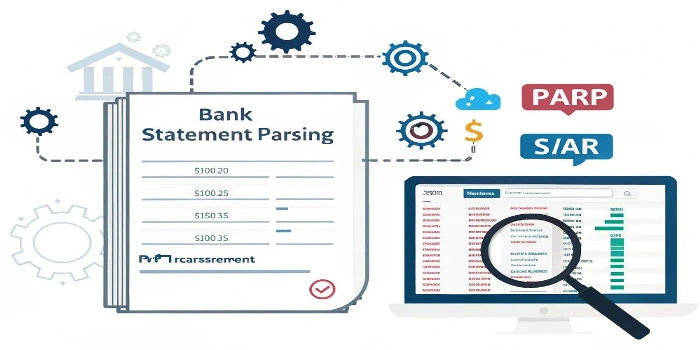20-22 Wenlock Road, LONDON, N1 7GU
20-22 Wenlock Road, LONDON, N1 7GU

Businesses and developers are increasingly relying on automation to streamline financial operations. One crucial task in this landscape is bank statement parsing—a process that involves extracting structured data from unstructured bank documents like PDFs or scanned images and converting it into a machine-readable format, often JSON. Whether you’re building a fintech application, automating reconciliations, or enhancing customer insights, parsing bank statements is a game-changer.
In this blog, we’ll dive deep into how bank statement parsing works, common challenges, and how to transform raw data into clean, JSON-formatted output.
Bank statement parsing is the process of automatically extracting transactional and metadata information from bank statements. These statements can come in various formats—PDFs, images, or plain text—and are usually not in a format that machines can easily understand or manipulate.
By parsing these documents, you can extract:
The end goal is to structure this data in a format like JSON (JavaScript Object Notation), which is ideal for APIs, web applications, and data analytics tools.
JSON is a lightweight, language-independent data format that’s easy for humans to read and write and easy for machines to parse and generate. Converting bank statement data to JSON allows for:
Bank statements can be:
Understanding the document type is crucial as it determines the parsing approach.
If you’re working with scanned documents, use OCR (Optical Character Recognition) to convert images to text. Tools like:
…can detect and extract text from complex layouts.
import pytesseract
from PIL import Image
text = pytesseract.image_to_string(Image.open('statement.png'))For digitally generated PDFs (non-scanned), libraries such as:
…can extract text directly without OCR.
import pdfplumber
with pdfplumber.open("statement.pdf") as pdf:
for page in pdf.pages:
print(page.extract_text())Once you’ve extracted the raw text:
You’ll typically use regex or keyword-based splitting to isolate transaction lines.
Use regular expressions or NLP to detect lines containing transaction data.
Example of a regex pattern:
import re
pattern = r"(\d{2}/\d{2}/\d{4})\s+(.+?)\s+(-?\d+\.\d{2})\s+(\d+\.\d{2})"
matches = re.findall(pattern, text)
transactions = []
for match in matches:
transactions.append({
"date": match[0],
"description": match[1],
"amount": float(match[2]),
"balance": float(match[3])
})Once data is structured in Python (or any language), converting it to JSON is simple.
import json
with open("output.json", "w") as f:
json.dump(transactions, f, indent=4)Sample JSON output:
[
{
"date": "01/04/2025",
"description": "ATM Withdrawal",
"amount": -500.00,
"balance": 1500.00
},
{
"date": "03/04/2025",
"description": "Salary Credit",
"amount": 2000.00,
"balance": 3500.00
}
]Bank statement parsing and converting data into JSON format is a powerful step toward automating financial workflows, building intelligent fintech apps, or simply organizing financial data at scale. While challenges exist, particularly around document formats and OCR accuracy, the combination of modern tools and intelligent scripting makes it possible to extract structured, actionable insights from unstructured financial data.
If you’re building a solution involving financial data extraction, investing in a robust parsing pipeline can save you countless hours and unlock real-time financial intelligence.
Bank statement parsing is the process of extracting transactional and financial data from a bank statement and converting it into structured formats like JSON.
Yes, scanned statements can be parsed using OCR (Optical Character Recognition) tools like Tesseract or Google Vision API to extract text from images.
JSON is lightweight, easy to process programmatically, and integrates well with APIs and databases, making it ideal for automating financial tasks.
Popular libraries include pdfplumber, pyPDF2, and PDFMiner for digital PDFs, and pytesseract for scanned image-based PDFs.
Yes, it can be secure if proper measures like encryption, secure data storage, and access controls are implemented during the extraction and processing stages.